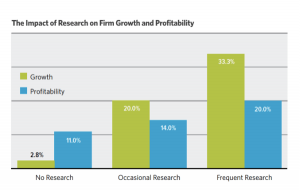Did you know over the course of 12 years, there was a 159 percent increase in remote work in the U.S.? Remote work is the new norm and it has numerous benefits, including attracting and retaining top talent, increased job satisfaction and morale, and stronger productivity. If you are currently in a managerial or HR role, it’s critical that you support your remote employees so that they remain engaged and that business runs smoothly. If you’re not a manager or in a HR role, it’s equally important for you to stay motivated when working from home. In this blog post, we walk you through the value of remote work and how to work from home effectively.
Remote work leads to stronger productivity
In today’s high-tech business world, work-from-home capabilities have significantly evolved. From cloud collaboration software to video conferences, chat apps to email, there are dozens of technologies that allow employees to work from home effectively.
While you may be concerned about work hours lost, when employees are set up for success, they often thrive. After surveying 1,004 full-time employees, it was found that remote employees are actually more productive than in-office employees. They worked an average of 1.4 more days per month, equating to 16.8 more days annually.
Top tips on how to work from home effectively
Companies across the globe are taking a remote work approach. And now, more than ever, it’s important to share best practices on how to work from home effectively. If your company has decided to kickstart a “work from home” strategy, it’s imperative that you take certain steps to ensure optimal efficiency and productivity. The following suggestions should be made available to employees and implemented by managers.
1. Encourage work breaks
While the research indicates that remote workers take slightly longer breaks on average, they remain productive for an additional 10 minutes per day. In an insightful study, it was revealed that the most productive people work for 52 minutes, then break for 17 minutes.
This is why you should encourage your remote employees to take brief yet meaningful breaks throughout their workday. In an office setting, there are often set breaks and a period for lunch. Create a similar schedule for your remote workers so that they remain productive and avoid burnout.
Tip: Provide employees with recommendations so that they can create a routine that favors regular breaks — and if employees are suffering from anxiety, here are some great strategies to help them better manage stress levels so that they can remain focused. Some of these suggestions could be included in a weekly newsletter.

2. Put recognition front and center
Employee recognition is a high-impact strategy that increases employee productivity and engagement — especially among top performers. According to Achievers’ Engagement and Retention report, 90 percent of workers say when they receive recognition it motivates them to work harder. And according to Gallup, only one in three American workers strongly agree that they received recognition for doing work in the past seven days.
There are multiple ways to recognize those who go above and beyond. For example, with the right recognition platform, employees easily send and receive recognitions, view all sent recognitions in a company-wide news feed, and sign digital celebration cards highlighting work anniversaries and accomplishments. Put recognition front and center to motivate and engage employees on a regular basis.
3. Establish working hours
If your office normally works from 8 am to 4 pm, then ask your employees if they’d like to follow this schedule. Not only will it be less of a transition, but it will also ensure that your team is all working at the same time in regards to communication.
In this case, you can establish structured daily check-ins, either individually or as a team. In terms of communication, simply offering email alone is insufficient. Video conferencing is important whenever you’re having more complex or even sensitive conversations.
However, you should also be open to less controlled schedules to keep remote employees engaged and motivated. Work with your team to see how they’re adjusting. You may find that some employees thrive early in the morning and prefer to work from 6 am to 2 pm — or may even be willing to put in hours on the weekend to help with any high-priority tasks.
Tip: Unless you have already implemented a team management app that works for you, both Slack and Asana are great to effectively manage employees, projects, and everything in between.
4. Take employee feedback seriously
There are many reasons why remote work is highly successful for many companies. As stated in this Harvard Business Review article, being able to work from home effectively is based on the following principles: culture, coordination, and communication.
While it’s critical for managers to communicate with their teams in terms of training and daily operations, it’s also imperative that employees are heard. Understanding the value of employee voice while in a leadership role will help drive the success of your company.
To do so, implement pulse surveys or even chatbots to ensure regular, open communication. Once you hear what employees have to say, it will be time to take action. After all, the research shows that employees who feel heard are 4.6 times more likely to feel empowered to perform their best work.

5. Create daily or weekly to-do lists
Starting from day one, it’s important to properly coordinate projects and tasks. As a manager, it’s crucial that you not only clearly articulate your goals, but that you also create detailed project plans and lists — lists that are assigned to specific individuals or teams. This will ensure that your employees remain proactive and know exactly what is on their to-do list.
Go digital on your next brainstorm and discuss tasks or projects via virtual white boards. From there, you can assign roles and set deadlines.
Tip: Explore digital collaboration tools, including Mural and Miro.
At the end of the day, digital technology has provided the workforce with new opportunities that allow companies to thrive. If your company has been transitioning to remote work or is currently making the switch, check out our free guide on how to engage the digital workforce.
Business & Finance Articles on Business 2 Community
(41)
Report Post




